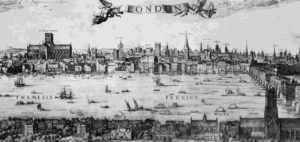Confessing Creation Again
Ecclesiastes 7:29
“Lo, this only have I found, that God hath made man upright; but they have sought out many inventions.”
 In the previous Creation Moment, I looked at the Westminster Confession of Faith and showed that the statement in chapter 4 §I is very clear on the necessity of believing that God made the world in six literal 24-hour days. The same statement also appears at chapter 4 §I of the 1689 London Baptist Confession.
In the previous Creation Moment, I looked at the Westminster Confession of Faith and showed that the statement in chapter 4 §I is very clear on the necessity of believing that God made the world in six literal 24-hour days. The same statement also appears at chapter 4 §I of the 1689 London Baptist Confession.
Chapter 4 §II of 1689 London goes on to say this:
After God had made all other creatures, he created man, male and female, with reasonable and immortal souls, rendering them fit unto that life to God for which they were created; being made after the image of God, in knowledge, righteousness, and true holiness; having the law of God written in their hearts, and power to fulfill it, and yet under a possibility of transgressing, being left to the liberty of their own will, which was subject to change.
A very similar statement, with slightly different wording, appears in the Westminster Confession.
It must be remembered that these statements are part of Confessions which lay down those things which those churches decided people ought to believe. It should be noted that §II is telling us that the creation of humans is separate from the creation of all other creatures. We know this from Scripture, when we read that God called all the other creatures directly into existence, whereas He made Adam from the dust of the Earth, molding him, then breathing life into him.
Far from evolving from ape-like creatures, this statement tells us that man was made in God’s image, with God’s law within him, and the ability to obey or disobey. Author: Paul F. Taylor
Prayer: We are amazed, O Lord, that You are mindful of us. We praise You that we are fearfully and wonderfully made, and we thank You. Amen.
Ref: 1689 London Baptist Confession of Faith, < http://www.vor.org/truth/1689/1689bc00.html >, accessed 1/22/2018. Image: Claes Janszoon Visscher II (1587–1652), license: Public Domain (more than 100 years after artist’s death).